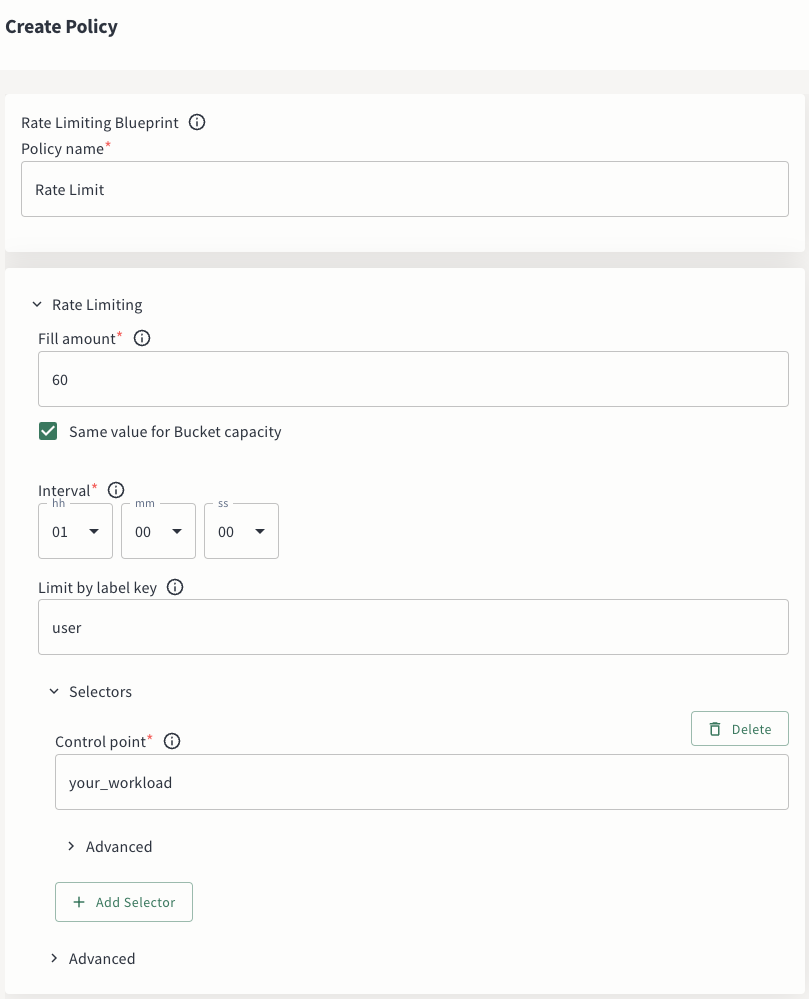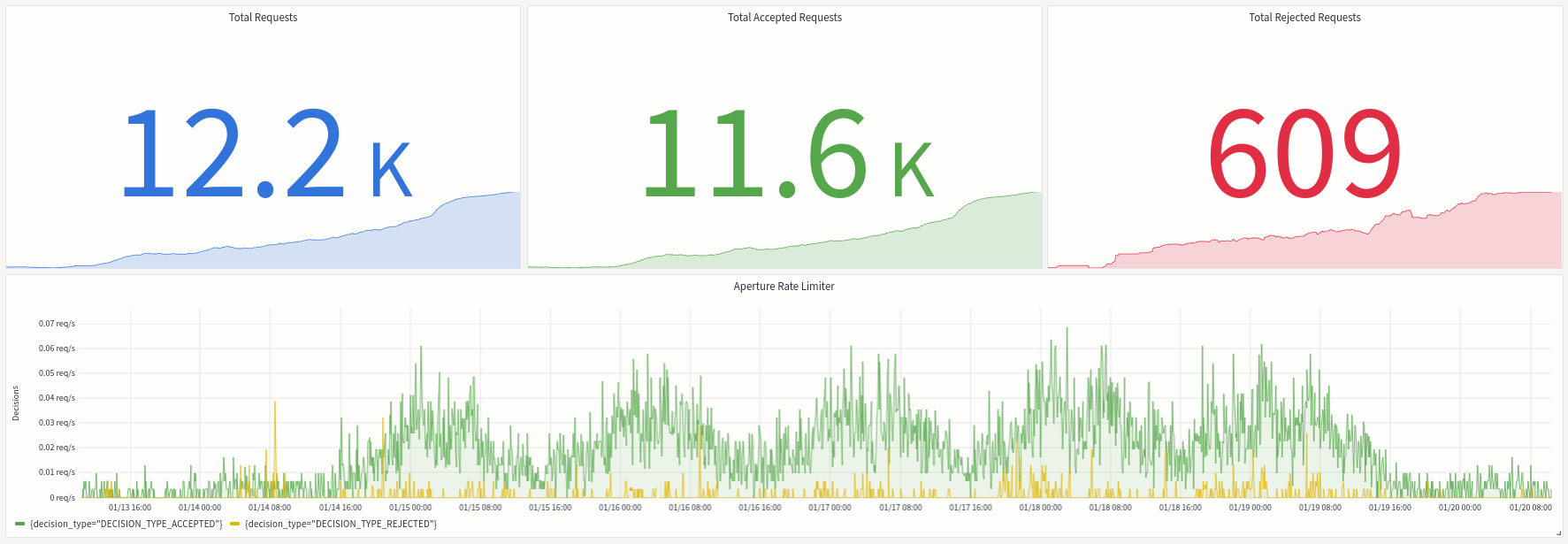Introduction
Aperture is a distributed load management platform designed for rate limiting, caching, and prioritizing requests in cloud applications. Built upon a foundation of distributed counters, observability, and a global control plane, it provides a comprehensive suite of load management capabilities. These capabilities enhance the reliability and performance of cloud applications, while also optimizing cost and resource utilization.

Integrating Aperture in your application through SDKs is a simple 3-step process:
- Define labels: Define labels to identify users, entities, or features within your application. For example, you can define labels to identify individual users, features, or API endpoints.
Example
// Tailor policies to get deeper insights into your workload with labels that
// capture business context.
const labels = {
// You can rate limit each user individually.
user: "jack",
// And have different rate limits for different tiers of users.
tier: "premium",
// You can also provide the tokens for each request.
// Tokens are flexible: LLM AI tokens in a prompt, complexity of a request,
// number of sub-actions, etc.
tokens: "200",
// When peak load exceeds external quotas or infrastructure capacity,
// requests can be throttled and prioritized.
priority: HIGH,
// Get deep insights into your workload. You can slice and dice performance
// metrics by any label.
workload: "/chat",
};
- Wrap your workload: Wrap your workload with
startFlowandendFlowcalls to establish control points around specific features or code sections inside your application. For example, you can wrap your API endpoints with Aperture SDKs to limit the number of requests per user or feature.
Example
// Wrap your workload with startFlow and endFlow calls, passing in the
// labels you defined earlier.
const flow = await apertureClient.startFlow("your_workload", {
labels: labels,
// Lookup result cache key to retrieve a cached result.
resultCacheKey: queryParams,
});
// If rate or quota limit is not exceeded, the workload is executed.
if (flow.shouldRun()) {
// Return a cached result or execute the workload.
const cachedResult = flow.resultCache();
const result = await yourWorkload(cachedResult);
flow.setResultCache({
value: result,
ttl: { seconds: 86400, nanos: 0 },
});
}
//
- Configure & monitor policies: Configure policies to control the rate, concurrency, and priority of requests.
Policy YAML
blueprint: rate-limiting/base
uri: github.com/fluxninja/aperture/blueprints@latest
policy:
policy_name: rate_limit
rate_limiter:
bucket_capacity: 60
fill_amount: 60
parameters:
interval: 3600s
limit_by_label_key: user
selectors:
- control_point: your_workload
label_matcher:
match_list:
- key: tier
operator: In
values:
- premium




In addition to language SDKs, Aperture also integrates with existing control points such as API gateways, service meshes, and application middlewares.
Aperture is available as a managed service, Aperture Cloud, or can be self-hosted within your infrastructure. Visit the Architecture page for more details.
To sign up to Aperture Cloud, click here.
⚙️ Load management capabilities
- ⏱️ Global Rate-Limiting: Safeguard APIs and features against excessive usage with Aperture's high-performance, distributed rate limiter. Identify individual users or entities by fine-grained labels. Create precise rate limiters controlling burst-capacity and fill-rate tailored to business-specific labels. Refer to the Rate Limiting guide for more details.
- 📊 API Quota Management: Maintain compliance with external API quotas with a global token bucket and smart request queuing. This feature regulates requests aimed at external services, ensuring that the usage remains within prescribed rate limits and avoids penalties or additional costs. Refer to the API Quota Management guide for more details.
- 🚦 Concurrency Control and Prioritization: Safeguard against abrupt service overloads by limiting the number of concurrent in-flight requests. Any requests beyond this limit are queued and let in based on their priority as capacity becomes available. Refer to the Concurrency Control and Prioritization guide for more details.
- 🎯 Workload Prioritization: Safeguard crucial user experience pathways and ensure prioritized access to external APIs by strategically prioritizing workloads. With weighted fair queuing, Aperture aligns resource distribution with business value and urgency of requests. Workload prioritization applies to API Quota Management and Adaptive Queuing use cases.
- 💾 Caching: Boost application performance and reduce costs by caching costly operations, preventing duplicate requests to pay-per-use services, and easing the load on constrained services. Refer to the Caching guide for more details.
✨ Get started
📖 Learn
The Concepts section provides detailed insights into essential elements of Aperture's system and policies, offering a comprehensive understanding of their key components.
Additional Support
Don't hesitate to engage with us for any queries or clarifications. Our team is here to assist and ensure that your experience with Aperture is smooth and beneficial.
💬 Consult with an expert | 👥 Join our Slack Community | ✉️ Email: support@fluxninja.com
